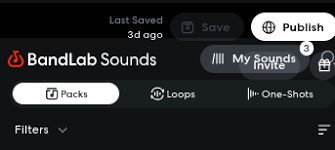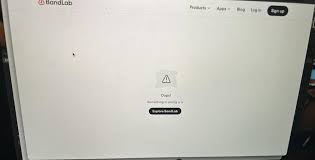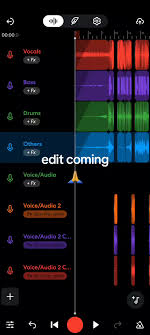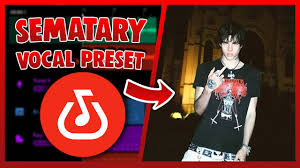The rise of browser-based and mobile-first music production tools has made it easier than ever for creators to produce, record, and collaborate on songs without needing expensive studio gear. Two of the most popular names in this space are BandLab and Soundtrap. Both are digital audio workstations (DAWs) that run online, both make collaboration easy, and both are trusted by millions of users worldwide.
But when it comes to choosing the right platform for your creative journey, the BandLab vs Soundtrap debate gets interesting. Each tool has unique strengths and limitations, and the best option depends on your workflow, budget, and goals as a musician.
This guide breaks down the details: features, usability, pricing, pros and cons, and practical tips for deciding which DAW fits you best.

What Is BandLab?
BandLab is a free, cloud-based DAW launched in 2015 by BandLab Technologies, headquartered in Singapore. Over the years, it has become a global platform with over 60 million registered users, making it one of the largest online music creation communities.
Key aspects of BandLab include:
100% free access to its music production suite.
Cross-platform usability (desktop, iOS, Android).
Unlimited cloud storage for projects.
Collaboration features for real-time co-creation.
Extra tools like mastering, sample packs, and even integration with Cakewalk by BandLab (a professional-level DAW for Windows).
BandLab isn’t just a DAW—it’s also a social network for musicians, where you can publish your work, find collaborators, and build an audience.
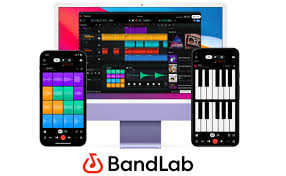
What Is Soundtrap?
Soundtrap, on the other hand, is an online DAW owned by Spotify. It was founded in Sweden in 2012 and acquired by Spotify in 2017. With Soundtrap, creators get access to a sleek, browser-based music studio with tight Spotify integration.
Notable Soundtrap features include:
Loop library with 4,000+ loops and 550+ instruments (varies by subscription tier).
Real-time collaboration, similar to Google Docs but for music.
Cloud-based projects accessible across devices.
Podcasting studio with transcription features.
Paid subscription model, starting at $7.99/month for premium plans.
Soundtrap leans heavily into professional collaboration for both musicians and podcasters, offering a polished environment and advanced tools—if you’re willing to pay.

BandLab vs Soundtrap: Features Comparison
Let’s compare BandLab vs Soundtrap across the most important categories for creators.
1. Accessibility and Pricing
BandLab: Completely free, with unlimited projects, storage, and core tools. Paid extras are not required to unlock basic production features.
Soundtrap: Limited free version with significant restrictions (e.g., fewer instruments, loops, and mixing options). To unlock the full studio experience, you need to subscribe to paid plans.
Winner: BandLab for affordability, especially for beginners.
2. Instruments and Sounds
BandLab: Offers 200+ virtual instruments and thousands of royalty-free samples. The library continues to expand, though it is less extensive than Soundtrap’s higher-tier plans.
Soundtrap: Access to 4,000+ loops and 550+ instruments if you pay for premium. Soundtrap has an edge in sound variety, especially for electronic and modern genres.
Winner: Soundtrap for premium sound packs, though BandLab provides more than enough for most entry-level users.
3. Collaboration Tools
BandLab: Allows instant project sharing, commenting, and co-creation inside its ecosystem. The platform’s built-in community makes finding collaborators much easier.
Soundtrap: Also strong in collaboration, especially for remote teams. With Spotify integration, sharing and co-publishing music is seamless.
Winner: Tie—BandLab wins for built-in community, Soundtrap for Spotify synergy.
4. Mixing and Mastering
BandLab: Includes a free, one-click mastering tool that has become surprisingly popular among independent artists. You can choose from presets like “CD Quality” or “Bass Boost.”
Soundtrap: Provides more advanced EQ and automation features in paid tiers but lacks a dedicated mastering suite.
Winner: BandLab, since mastering is free and beginner-friendly.
5. Podcasting
BandLab: Can be used for podcast editing but is primarily designed for music.
Soundtrap: Has a dedicated podcast studio with automatic transcription and text-based editing—ideal for podcasters.
Winner: Soundtrap, no contest.
6. Learning Curve and Ease of Use
BandLab: Geared toward beginners, with drag-and-drop simplicity and mobile-first design.
Soundtrap: Slightly more advanced, with a polished interface that feels closer to pro-level DAWs.
Winner: BandLab for ease of entry, Soundtrap for pros seeking more complexity.
Pros and Cons of BandLab vs Soundtrap
BandLab Pros:
100% free with no hidden costs.
Active global community for sharing and feedback.
Unlimited cloud storage.
Great for beginners and hobbyists.
BandLab Cons:
Fewer advanced mixing tools compared to pro DAWs.
Sample and loop library not as large as Soundtrap’s premium version.
Soundtrap Pros:
Huge library of instruments and loops.
Professional podcasting features.
Spotify integration for distribution and exposure.
Strong for educational use (classroom features available).
Soundtrap Cons:
Free version is very limited.
Requires ongoing subscription to access best features.
Not as socially interactive as BandLab.
Which Should You Choose?
If you’re a beginner musician looking for a free, easy-to-use tool that doubles as a creative community, BandLab is the clear winner. It lowers the barrier to entry and gives you everything you need to start making music right away.
If you’re a professional creator or podcaster who needs premium loops, educational tools, and Spotify integration, Soundtrap is the stronger option—provided you’re okay with a monthly subscription.
Conclusion
The BandLab vs Soundtrap debate doesn’t have a one-size-fits-all answer. Both tools empower creators to make and share music without traditional studio costs. BandLab shines as a free, community-driven platform perfect for musicians at all levels, while Soundtrap offers polished professional features for those willing to invest.
Your choice comes down to your budget, goals, and how you plan to distribute your creations.
FAQ
Is BandLab really free?
Yes, BandLab is completely free with unlimited access to core features.
Does Soundtrap have a free plan?
Yes, but it’s limited—you’ll need a paid subscription for the best features.
Can I use BandLab for professional releases?
Absolutely. Many indie artists release songs mastered on BandLab.
Which DAW is better for podcasting?
Soundtrap is better due to its transcription and editing tools.
Can I collaborate across BandLab and Soundtrap?
Not directly—you’d need to export stems and share manually.

